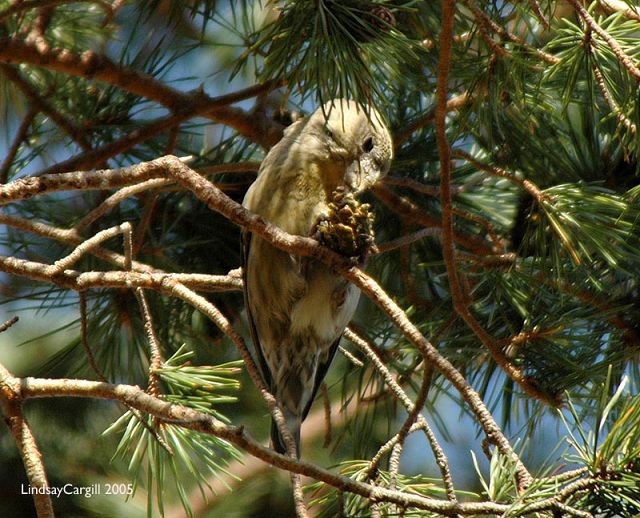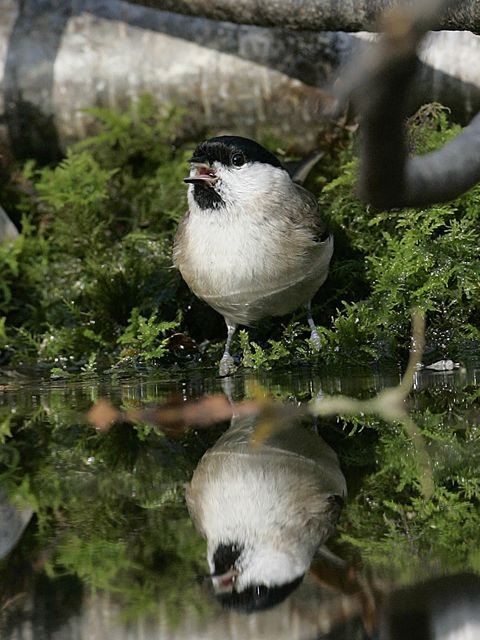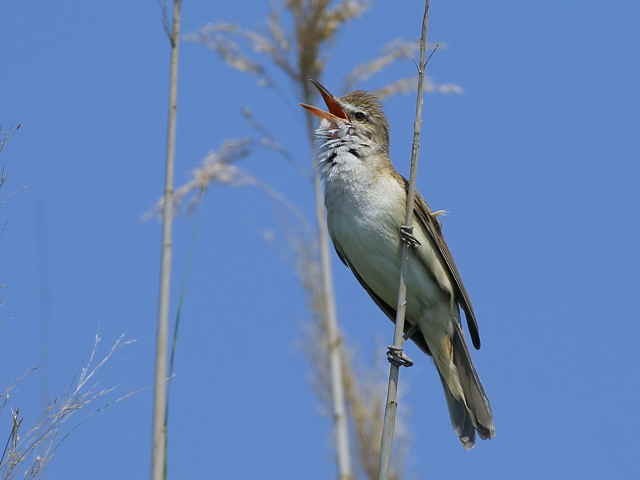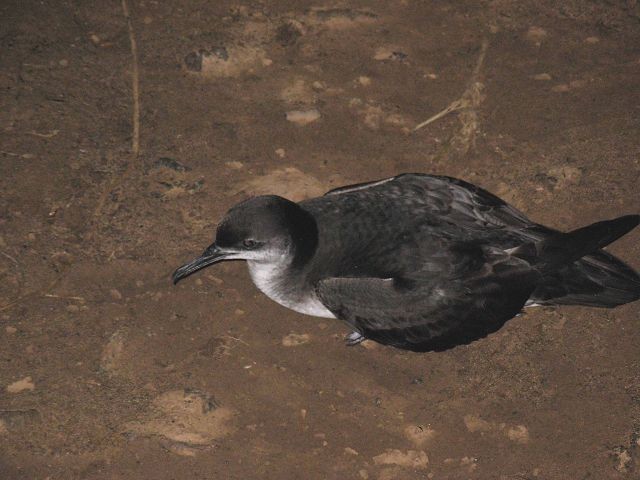Within the Wildlife Sound Recording Society there is a prevalent fascination with the technical aspects of wildlife sound recording, and with equipment in general, including recorders, parabolic reflectors, and microphones. The latter have altered comparatively little over the last couple of decades, save for a tendency towards increasing miniaturisation. By contrast, recorders have undergone a sequence of metamorphoses - from the large and heavy open-reel format, through the universality of Standard Compact Cassette, via Digital Audio Tape (DAT), MiniDisc and the short-lived Digital Compact Cassette, to portable CD and portable hard-drive recorders; and now to the latest emergence as solid-state Compact Flash card units. It is difficult to predict future developments. (Actually, for those readers with an above-average knowledge of audio recording, it might just be worth mentioning here that the actual format or principle on which any given recorder operates is of considerably less importance than is the quality of the "front end" of the recorder, that is, the microphone pre-amplifier circuitry. And it is this that is expensive.)
All of the foregoing may seem to some to be a little incestuous, and one can become lost in a labyrinth of inconsequential detail, but it should be remembered that a knowledge of natural sounds and bioacoustics does carry practical applications for sorting species in the field. For instance, in April 1993 a friend and I were encountering Crossbills in the Abernethy Forest, near to the famous RSPB Loch Garten reserve. I was hand-holding a parabolic reflector rig and making (noisy) sound recordings whilst friend Steve observed the birds through bins. A large feeding flock of Loxia species was going through the woodland, and giving repeated "gyp, gyp, gyp, gyp" calls (apologies for my own representation of the sounds!). The metallic aspects of these calls suggested to me so-called Scottish Crossbills (Loxia scotica) or even Parrot Crossbill (Loxia pytyopsittacus) rather than Common or Red Crossbill (Loxia curvirostra). Steve's visual observations of bill and head shape added confirmation to these sonic implications. On talking to the wardens afterwards, we learned that there were indeed Parrot Crossbills in the area, in addition to the Scottish and Common species.

Parrot Crossbill, undisclosed site, Aberdeenshire (Photo:
Lindsay Cargill)
Around the same period I was again lurking around woodland in search of wildlife sounds, but this time in Lincolnshire, near Bourne. My recordings confirmed the simultaneous occurrence in the same wood of Marsh Tit and Willow Tit. At one point the two species were both calling together, but I would not have been able to separate them visually - at least not whilst holding reflector and recorder!

Marsh Tit, Wyre Forest, Worcestershire (Photo:
Mark Hancox)
As I mentioned in Part I, I have made many dozens of very good friends through the WSRS, but it does need to be noted that recording wildlife sound is a solitary and rather unsociable activity. One must be alone, because the presence of others adds to the potential for unwanted noise. Indeed when one is working close to a reflector, as is now my wont, even one's own breathing will often suffice to degrade an intimate sound picture. It really is preferable for the recordist to stop respiring, a view shared by a friend of mine when we were birding in Spain together in the summer of 1993! This was my first taste of recording overseas, and as I was using a Telinga parabolic reflector rig, which is an amazingly portable, lightweight piece of kit, I was routinely deploying it at everything that sang. "I won't be going away with you again!" my friend Mike remarked in a gruff undertone at the end of the trip. And, would you believe, he never has since that date, although we are still friends - I think.

A sturdy tripod!
(By the way, these Telinga parabolic microphone outfits are extremely popular with WSRS members, probably because they pack well, are easy to use, and prove quite resistant to handling noise. However, I have not used one for years now, as in my opinion the sound quality they yield is poor. Better, I would argue, to use a pair of professional studio condenser microphones mounted in a fibre-glass reflector and supported by a sturdy tripod, if one really is intent on giving oneself a chance of achieving something worthwhile. But, this is just my own prejudiced view, even though I am undoubtedly correct!)
It was exciting to for me to have a try at gaining reasonable sound-portraits of species rarely encountered, and certainly not realistically recordable in the UK, and this is precisely how I occupied my two weeks in northern Spain on that trip of many years ago. I made stereo recordings of Black Redstart, Zitting Cisticola, Great Reed Warbler, Red-Billed Chough, Water Pipit, and many other species.

Great Reed Warbler, Turkey (Asian) (Photo:
Ian Fulton)
But this was only the start. In May 1997 a group of WSRS recordists made their way northwards along the coast of the Outer Hebrides, and this was my first time on one of their organised "expeditions", as they used to be called. I think that of all my "holidays" this was probably the best to date. Here I was in the company of like-minded sound enthusiasts (eccentrics?), and we all got along brilliantly. Quite unexpected, for me, were some of the avian species we saw. For instance, on South Uist, I was truly staggered to find a Purple Heron on moorland, and even more incredulous to read later that this same species had last occurred in the selfsame parish 17 years earlier almost to the day! This was just the third record for the Outer Hebrides. No, I didn't manage to obtain a sound recording - the bird was extremely flighty, and was up and away as soon as it became aware of us. Naturally, I checked with the relevant county recorder, and submitted a record, as did my companion who also saw it. However, apparently the Scottish Birds Rarities Committee would not accept our record. They demanded more detail. I ask you, what kind of detail does one need to identify a Purple Heron? It could hardly have been a Goliath Heron, which is the only likely confusion species that comes to my mind, and if it had been then this would have been considerably less credible than the species which I identified it as. ("I reckon this Sassenach just saw a Goliath Heron. These southern types are all the same! Call themselves birders?") Anyway, I was assured later, on the quiet, that the same bird had been seen and identified by a Dutch birder about two weeks before my sighting. Another southerner?
I understand further that on this trip, some of our group had sightings of a Melodious Warbler, another species well beyond its normal range.
However, for me the main excitement of this expedition lay in capturing the sounds of species typical to the region in such quiet habitats, as extraneous sound of human origin is a major problem for the wildlife sound recordist trying to achieve perfection and sonic purity. For years now, I have invariably recorded in stereo; and in laying down stereo soundscapes, one can take away from a habitat not only the sounds of the creatures living there, but also every acoustic nuance of the place. This is well worthwhile, but rather difficult to bring off. We had travelled hundreds of miles over land and water to get our chance to obtain our Hebridean sound portraits, and this fact attracted the attentions of one Mark Rickards and BBC Scotland.
Mark is an independent radio programme maker, and I have happened to hear a number of his productions on the Radio 4 network over the ten years or so since we made his acquaintance on the island of Lewis. He had flown out specially to meet us in order to create a feature, and this he achieved by the simple expedient of turning up on a remote roadside where Todd and one Dr Alan Burbidge (now WSRS Secretary) were busily engaged in recording the song of Eurasian Cuckoo echoing evocatively off the sheer walls of Hebridean gneiss which flanked the little moorland lane and parallel burn. Mr Rickards had but the simplest of kit - a dynamic microphone of American manufacture, and a Sony WMD6C Stereo Compact Cassette Recorder (identical to the one I too own, but have not used for years). I should explain for those who have not yet fallen asleep, and/or those who might just possess an actual curiosity for details of the art of wildlife sound recording, that dynamic microphones, otherwise known as moving coil instruments - nothing to do with contraception, by the way - are characterised by simplicity, self-powering, ruggedness, clean output, and a very low level of output. It is this latter factor that can create problems, as in order to render a signal level usable, it is necessary to employ powerful and above all clean pre-amplification circuitry. Now, the WMD6C, despite its undoubted merits of robustness, reliability and simplicity, does not feature this quality of "front end". Puzzled as to why a representative of the august BBC should turn up with so basic a set of tackle to capture material for a programme intended to go out on national radio, I asked him. His answer was revealing. Mark said something along the lines of - and please forgive me Mark as this is from a ten-year old memory and no notes - "Yes, I do feel embarrassed when I see the kit you wildlife sound people are using here, but the units that I've brought with me have the advantages of reliability and flexibility. For instance, if I need batteries or cassettes for the Sony, I could probably buy them here in the middle of nowhere at the local store." He went on to point out that once back in the studio, the audio is loaded into a suitable software program, and hence from then on all is possible in the digital domain.
That evening Mark accompanied Alan and me as we walked a moorland road to a sea loch, and he hovered between us capturing our commentary as we mused on our adventure. The next morning, whilst interviewing other members of the team back at our cottage, he shielded his microphone from the wind by placing it in the lee of a dry-stone wall. Finally, he requested copies of various selected recordings which members had obtained on the trip, and the result was an atmospheric half-hour radio programme which I personally have heard two or three times on the network. The name of this programme, incidentally, was A Song Amidst the Silence, and the specially composed music adds greatly to the overall impact of the piece. I do recommend a listen.
Perhaps it was this very programme that encouraged me to put together the very first CD publication to carry the name of the Wildlife Sound Recording Society, although it was not until the following year that this possibility was provided by material gained on the next WSRS trip. (I must note at this juncture that many individual members of WSRS have published compilations under their own names. Individuals springing to mind include Richard Margoschis, Chris Watson and Simon Elliott, John Paterson, Geoff Sample, Eloisa Matheu, Krister Mild, Jeremy West, Tony Wilson, and probably others, not to mention the British Library Sound Archive themselves.)

Manx Shearwater, Skomer, Pembrokeshire (Photo:
Derek Moore)
As I wrote above, the fascination of wildlife sound recording to us aficionados is the satisfaction of capturing a complete habitat in sound, and our week-long sojourn on the Welsh island of Skokholm in May 1998 provided a dozen WSRS members with just such an opportunity. Skokholm island rises totally remote on towering sea-cliffs a couple of miles off the Pembrokeshire coast, and measures only one mile by half a mile. The topsoil is thin and friable, and honeycombed by a vast network of rabbit warrens, long stolen from their true owners and used by some 35,000 pairs of Manx Shearwaters as breeding burrows. As BirdGuides readers will surely be aware, one shearwater parent at a time incubates the egg whilst the other of the pair feeds out at sea. On nights of maximum darkness the feeder returns for the "1am changeover" (as I've heard it described), running the gauntlet of menacing Great Black-backed Gulls, which exercise a savage rapacity in attacking and ripping apart any unfortunate victim. At dawn one sees the horror of this nocturnal slaughter, evinced by a profusion of everted shearwater corpses strewn across the landing fields around the fearsome cliffs.
Visitors are hosted regally by staff of the Dyfed Wildlife Trust. The camaraderie and food are great although, as expected, the washing and toilet facilities are probably of little better standard than those enjoyed by the shearwaters themselves. Provided that one is prepared to bear these deprivations in the interest of one's art, however, the rewards are truly worthwhile. The island comes alive at night. The nighttime is the essence of the Skokholm experience, when the cries of gulls and piping of Oystercatchers are augmented by the churrings of Storm Petrels from drystone walls and the unearthly asthmatic wheezing of the shearwaters.
Making sound recordings of petrels and shearwaters on the nest is comparatively straightforward, as the vocalisations are of long duration and much amplitude, and the birds seem unconcerned by human proximity outside their quarters. A mono microphone placed in the entrance to the burrow reveals a range of intimate notes and calls; whilst the addition of a second microphone, to capture the night sounds of the island itself, sets this action within the context of an atmospheric soundscape.
I would certainly recommend a trip to Skokholm for any naturalist, and I found a week there to be a revelation. But, one word of warning: take an pair of industrial-standard goggles to protect the eyes, because shearwaters have long bills, and at any time during the night the sound recordist or photographer may be surrounded by hundreds of wheeling birds, seeming unsteady as they try to locate their own individual burrows. Why nobody has lost an eye to date is beyond me, as the last time I was on there, the warden told me that one bird had flown through a window in the observatory, and another had penetrated a lens assembly on an camera specifically placed to capture airborne birds.
Anyway, after a dozen WSRS members had completed their week on Skokholm in that May of 1998, the expedition leader asked me to "put together a cassette of the recordings". This I refused to do. The habitat, the vocalisations, and the standard of the sound recordings themselves demanded much more than this to do them justice, and so I promised to make proper job of it. The result, completed after three months' work, was the first publication to bear the name Wildlife Sound Recording Society. My intention was to span in sound a 24-hour period on Skokholm island; and in achieving this, our Skokholm Soundscapes CD comprises five sections. Perhaps the flavour of the thing is best conveyed here by quoting the track notes for Part One: By the Burrow :
"The sounds of a summer night on Skokholm. Storm Petrels churr and Manx Shearwaters wheeze. A close petrel sets the scene against the flight calls of incoming shearwaters, one of which is heard intimately in its burrow. The soundstage then opens out into a nightscape of Oystercatchers and gulls (mainly Lesser Black-Backed Gulls). Shearwaters fly in from the sea, seemingly in waves. A petrel sings, then a light aircraft drones across the black night sky, as though to remind the sound recordist of human civilisation away on the now forgotten mainland. Finally, Manx Shearwaters swoop in, as rainclouds shroud the island wilderness."
(Full details can be found on the WSRS website.)
Part III of Ian's article will appear here soon, covering some useful techniques, and explaining where birding by sound can really help to find birds.
The WSRS have an excellent website with details of their work, and how you can become a member.


